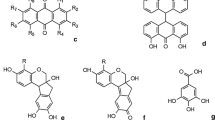Abstract.
A method is described which enables the group-separation of proteinaceous binding media from vegetable glues (carbohydrates), and simultaneous hydrolysis of the proteins in mixtures of both. The mixtures of the binders are suspended in aqueous–ethanolic solvent with the H+ form of a strong cation exchanger and treated at elevated temperature in sealed vials. The polypeptides are cleaved by H+-catalysed hydrolysis. On abstraction the amino acids are transformed into the ammonium ions by the protons, and the cations are adsorbed by the exchanger resin. The amino acids are removed from solution in this way, thus suppressing interfering reactions with other binders, e.g. humin formation with carbohydrates. Clear and colourless solutions were obtained with all mixtures of vegetable and animal glues. Two fractions can be obtained after separation of the solid resin from the liquid supernatant – the resin fraction with the adsorbed amino acids, and the aqueous–ethanolic solution with the carbohydrates. In each of these fractions the two classes of binder can be identified separately by GC–MS; this avoids the occurrence of unresolved GC peaks and superimposed mass spectra.
The method has been used to identify the binder found between fabric layers of a Burgundian liturgical vestment of the Order of the Golden Fleece from the first half of the 15th century, the Cope of the Virgin Mary. With the aid of the GC pattern obtained, and the mass spectra of the main peaks, which were identified as glucopyranose anomers, the binding medium was identified as starch.
Similar content being viewed by others
Author information
Authors and Affiliations
Additional information
Electronic Publication
Rights and permissions
About this article
Cite this article
Schneider, U., Kenndler, E. Identification of plant and animal glues in museum objects by GC–MS, after catalytic hydrolysis of the proteins by the use of a cation exchanger, with simultaneous separation from the carbohydrates. Fresenius J Anal Chem 371, 81–87 (2001). https://doi.org/10.1007/s002160100938
Received:
Revised:
Accepted:
Published:
Issue Date:
DOI: https://doi.org/10.1007/s002160100938




